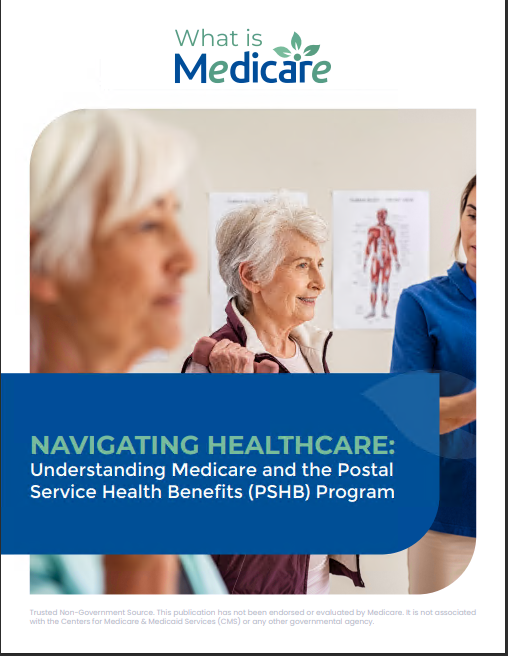Key Takeaways:
-
Deciding between Medicare Advantage and Traditional Medicare in 2025 requires understanding the differences in coverage, costs, and flexibility.
-
Medicare Advantage plans offer additional benefits, while Traditional Medicare provides broader provider access and straightforward billing.
Unpacking Medicare Options: What’s Right for You?
Choosing the right Medicare plan is one of the most important decisions you’ll make as you plan your healthcare. In 2025, both Medicare Advantage (Part C) and Traditional Medicare have their pros and cons, and the right choice depends on your health needs, budget, and lifestyle. Here, we’ll explore both options to help you make an informed decision, considering key factors like coverage, costs, and additional benefits.
What is Traditional Medicare?
Traditional Medicare, also called Original Medicare, is the government-run program consisting of two parts:
-
Part A (Hospital Insurance): Covers inpatient hospital stays, skilled nursing facilities, and some home health care. For most beneficiaries, Part A comes with no premium if you or your spouse paid Medicare taxes for at least 10 years.
-
Part B (Medical Insurance): Covers doctor visits, outpatient care, preventive services, and medical supplies. Unlike Part A, Part B requires a standard monthly premium, which will be $185 in 2025.
How It Works
-
You can see any doctor or specialist that accepts Medicare nationwide, offering unmatched flexibility and access.
-
Costs are generally straightforward, with set premiums, deductibles, and coinsurance rates for covered services.
-
Preventive care, such as screenings and annual wellness visits, is fully covered under Part B to help maintain your health.
What It Doesn’t Cover
-
Prescription drugs: Requires a separate Part D plan for medication coverage.
-
Routine dental, vision, and hearing services: You’ll need additional policies or pay out-of-pocket.
-
High out-of-pocket costs: Without supplemental coverage like Medigap, copayments and coinsurance for frequent or major medical services can add up quickly.
Understanding Medicare Advantage
Medicare Advantage (Part C) plans are offered by private insurance companies approved by Medicare. These plans bundle Part A, Part B, and often Part D (prescription drug coverage) into one comprehensive package.
What’s Included?
-
Many plans offer extra benefits, such as dental, vision, hearing, fitness memberships, and even transportation for medical appointments.
-
You’ll have a network of doctors and hospitals to choose from, often with lower costs for in-network care. These networks function like HMOs or PPOs depending on your plan.
Key Features
-
Out-of-pocket maximums: Medicare Advantage plans cap your annual spending, unlike Traditional Medicare.
-
Comprehensive coverage: These plans often reduce the need for additional policies, simplifying your healthcare setup.
-
Network restrictions: While the plans include many benefits, you’ll need to stay within the provider network or risk higher costs.
Comparing Costs: Medicare Advantage vs. Traditional Medicare
When it comes to costs, the differences between Traditional Medicare and Medicare Advantage can influence your decision significantly. Understanding the financial aspect of each option is crucial to choosing the right plan.
Premiums
-
Traditional Medicare:
-
A monthly premium for Part B, starting at $185 in 2025.
-
Additional premiums for Part D prescription coverage and optional Medigap policies.
-
-
Medicare Advantage:
-
Often includes Part D coverage with no separate premium, but overall costs depend on the specific plan and any additional benefits included.
-
Out-of-Pocket Limits
-
Traditional Medicare:
-
No cap on out-of-pocket expenses unless you purchase a Medigap plan.
-
-
Medicare Advantage:
-
Annual out-of-pocket maximums, which provide financial protection. For 2025, the maximum can range from $3,000 to $8,000, depending on the plan.
-
Additional Costs
Traditional Medicare frequently requires supplemental policies to fill coverage gaps. Medicare Advantage bundles services, potentially reducing the need for extra policies, but watch for copayments and coinsurance specific to the plan.
Access to Providers: A Key Difference
Your choice might come down to how important provider access is to you.
With Traditional Medicare
-
Access any doctor or specialist in the U.S. who accepts Medicare, giving you the freedom to seek care across state lines or with various specialists.
-
No referrals needed to see specialists, making it a convenient option for those who value flexibility.
With Medicare Advantage
-
Plans typically have networks of doctors and hospitals, meaning you’ll pay less for in-network care but more for out-of-network services.
-
Referral requirements may apply for specialists, and emergency care is covered regardless of network status.
Coverage for Prescription Drugs
Medication needs can play a big role in your decision.
Traditional Medicare
-
Requires a standalone Part D plan to cover prescription drugs.
-
Part D plans vary widely in premiums, formularies, and pharmacy networks. Be sure to evaluate which plan aligns with your medication needs and preferred pharmacy.
Medicare Advantage
-
Most plans include Part D coverage, streamlining your benefits. However, formularies (lists of covered drugs) vary, so carefully review to ensure your medications are included.
-
Medicare Advantage drug plans may offer mail-order options, potentially saving you time and money.
Additional Benefits: What Sets Medicare Advantage Apart
Medicare Advantage plans often go beyond the basics of Traditional Medicare by including extra perks. Here are some of the most notable ones:
-
Dental Care: Includes routine cleanings, exams, and potentially coverage for procedures like fillings and dentures.
-
Vision Coverage: Plans may cover glasses, contact lenses, and routine eye exams.
-
Hearing Services: Includes exams and hearing aid discounts or full coverage.
-
Over-the-Counter (OTC) Allowances: Credits for items like vitamins, first aid supplies, or cold medicine.
-
Fitness Programs: Access to popular wellness programs or gym memberships to support your overall health.
Flexibility and Lifestyle Considerations
Your lifestyle can heavily influence which option is better for you.
Traditional Medicare Works Best If:
-
You frequently travel or live part-time in different states.
-
You want freedom of choice for providers without worrying about network restrictions.
-
You prefer straightforward coverage without bundled perks.
Medicare Advantage Works Best If:
-
You’re looking for a plan that consolidates services like dental, vision, and drug coverage.
-
You prefer lower monthly costs and don’t mind using in-network providers.
-
You value added benefits, such as fitness memberships and hearing aid coverage.
Making Your Choice: Key Questions to Ask Yourself
Deciding between Medicare Advantage and Traditional Medicare means weighing your priorities. Here are some questions to guide your decision:
-
How often do I see doctors or specialists, and do they accept Medicare or participate in a specific network?
-
Do I have regular medication needs, and how would coverage differ between plans?
-
Is flexibility in provider choice a priority for me?
-
Am I interested in additional perks like dental or vision coverage?
-
How much can I afford monthly for premiums, and what level of out-of-pocket costs am I comfortable with?
Steps to Take During Open Enrollment
Open Enrollment is your opportunity to make changes or switch plans. Here’s how to make the most of it:
-
Compare Plans: Use Medicare’s online tools to evaluate Traditional Medicare, Medicare Advantage, and Part D options in your area.
-
Review the Annual Notice of Change (ANOC): If you’re already enrolled, this document outlines any updates to your plan for 2025.
-
Check Network Providers: Ensure your preferred doctors and pharmacies are in-network if you’re considering Medicare Advantage.
-
Consider Costs: Evaluate premiums, deductibles, and out-of-pocket limits.
-
Seek Assistance: Contact Medicare or local counseling programs for personalized guidance.
Benefits of Planning Ahead
Taking the time to evaluate your Medicare options isn’t just about 2025—it’s about safeguarding your health and finances for the future. By planning ahead, you can:
-
Minimize Costs: Avoid unexpected bills by choosing the right coverage upfront.
-
Ensure Access: Get the care you need from the providers you trust.
-
Maximize Benefits: Take advantage of all the services and perks available to you.
Take Charge of Your Medicare Plan for 2025
Deciding between Medicare Advantage and Traditional Medicare involves understanding your priorities and evaluating your options carefully. By considering your healthcare needs, preferred providers, and budget, you can choose the plan that fits your lifestyle best. Don’t wait—use Open Enrollment to secure the coverage you need for a healthier, stress-free year ahead.










